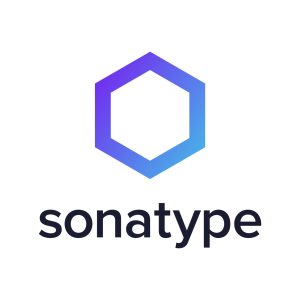We are using the Nexus Repository Manager Pro as exactly that, as an artifact repository. We tend to store any artifact that our application teams build in the repository solution. We also use it for artifacts that we pull down from open-source libraries that we use and dependencies that come from Maven Central. We use it to proxy a few places, including JCenter. We also use it as a private Docker registry, so we have our Docker images there as well.
We're on version 3.19. We also have Nexus IQ server, which wraps up within it Nexus Firewall.
We have a lot of legacy applications here and they're all built with Ant scripts and their dependencies come from a shared folder. There's not a lot of "accountability" there. What we get out of using Nexus is that all of our dependencies are in the same place and we can specify a specific version. We no longer have a situation where somebody has pulled down a .jar file and stuck it in this folder and we don't know what the version is or where, exactly, it came from. That's one of the benefits.
Another of the main things we get is what Sonatype calls a "bill of materials." We can go into our Nexus product and say, "Okay, here is our ABC application. What are its dependencies?" And we can be specific down to the version. We know what's in it and, if a vulnerability gets reported, we can look and see if we use that particular component and in which applications, to know if we're vulnerable. If we find we're exposed to that vulnerability we know we need to go and remediate it.
The biggest benefit we get out of it is the overall ease of development. The ability to automate a lot of the build-and-deploy process comes from that.
The data quality helps us solve problems faster, as in the security vulnerability example I just mentioned. In those circumstances, we have to solve that problem. Previously, we wouldn't have seen that vulnerability without a painstaking process. Part of the Nexus product, the IQ Server, will continually scan our components and if a new CVE is reported, we get that update through Nexus IQ. It automatically tells us, "Hey, in this open-source library that you're using, a vulnerability was found, and you use it in these four applications." It immediately tells us we are exposed to risk and in which areas. That happens, not in near real-time, but very quickly, where before, there was a very painstaking process to try to find that out.
A year ago we didn't have DevOps tools. We started building them after I came on. But Nexus definitely integrates very well with our DevOps tools. Sonatype produces plugins for Jenkins to make it seamlessly interact, not only with the repo product, but with the Nexus IQ product that we own as well. When we build our pipelines, we don't have to go through an array of calls. Even their command-line is almost like pipeline APIs that you can call. It makes it very simple to say "Okay, upload to Nexus." Because Jenkins knows what Nexus is and where it is — since it's configured within the Jenkins system — we can just say, "Upload that to Nexus," and it happens behind the scenes very easily. Before, we would have to either have run Maven commands or run Gradle commands via the shell script to get that done. We don't need to do that sort of thing anymore.
The solution has also brought open-source intelligence and policy enforcement across our SDLC. We have defined policies about certain things at various levels, and what risks we're willing to expose ourselves to. If we're going to proxy a library from Maven Central for example, if the Nexus IQ product says it has a security-critical vulnerability or it's "security high" or it's "component unknown," we can set different actions to happen. We allow our developers to pull down pretty much anything. As they pull something down from say, Maven Central, it is scanned. If it says, "This has a critical vulnerability," we will warn the developer with the report that comes out: "This has a security-critical vulnerability. You're allowed to bring it down in development, but when you try to move to QA or staging, that warning about the 'security-critical' component will turn to a failure action." So as we move our artifacts through that process, there are different stages. When someone tries to move that component to our staging environment, it will say, "Oh no, you can't because of the security-critical thing that we've been warning you about. Now we have to fail you." That's where we get policy enforcement. Before, that was a very manual process where we'd have to go out and say, "Okay, this thing has these vulnerabilities, what do we do with it?" It's much more straightforward and the turnaround time is a whole lot faster.
Automating open-source governance and minimizing risk is exactly what Nexus is for. Our company is very security conscious because we're governed by a number of things including the Fair Credit Reporting Act, which is very stringent in terms of what we can and cannot have, and the level of security for data and information that we maintain. What Nexus does is it allows us to look at the level of risk that we have in an application that we have written and that we expose to the companies that subscribe to us. It's based on the components that we have in the application and what their vulnerabilities are. We can see that very clearly for any application we have. Suppose, all of a sudden, that a Zero-day vulnerability — which is really bad — is found in JAXB today. We can immediately look for that version in Nexus. We can see: Do we have that? Yes, we do. Are we using it? Yes, we are. What applications are we using it in? We can see it's in this and that application and we can turn one of our teams to it and get them to address it right away.
I don't know exactly how much time it has saved us in releasing secure apps to market, but it's considerable. I would estimate it saves us weeks to a month, or more, depending upon the scope of a project.
And it has definitely increased developer productivity. They spend a lot less time looking for components or libraries that they can download. There was a very manual process to go through, before Nexus, if they wanted to use a particular open-source library. They had to submit a request and it had to go through a bunch of reviews to make sure that it didn't have vulnerabilities in it, and then they could get a "yes" or "no" answer. That took a lot of time. Whereas now, we allow them to download it and start working with it while other teams — like our enterprise security team — look at the vulnerabilities associated with it. That team will say, "Yeah, we can live with that," or "No, you have to mitigate that," or "No, you can't use this at all." We find that out very much earlier in the process now.
It allows us to shift gears or shift directions. If we find a component that's so flawed that we don't even want to bring it into the organization from a security standpoint, we can pivot and say, "Okay, we'll use this other component. It doesn't do everything we needed, but it's much more solid."


